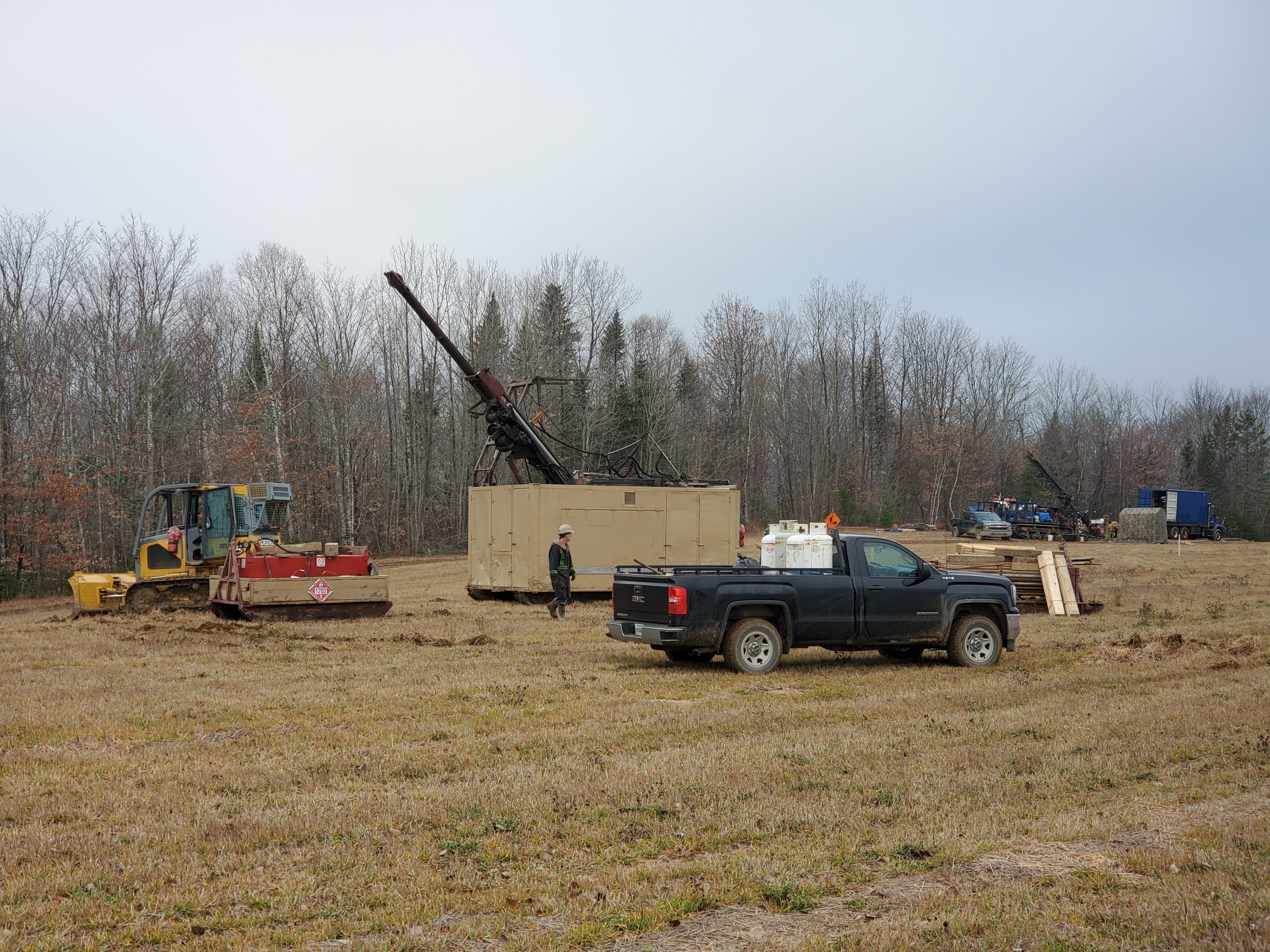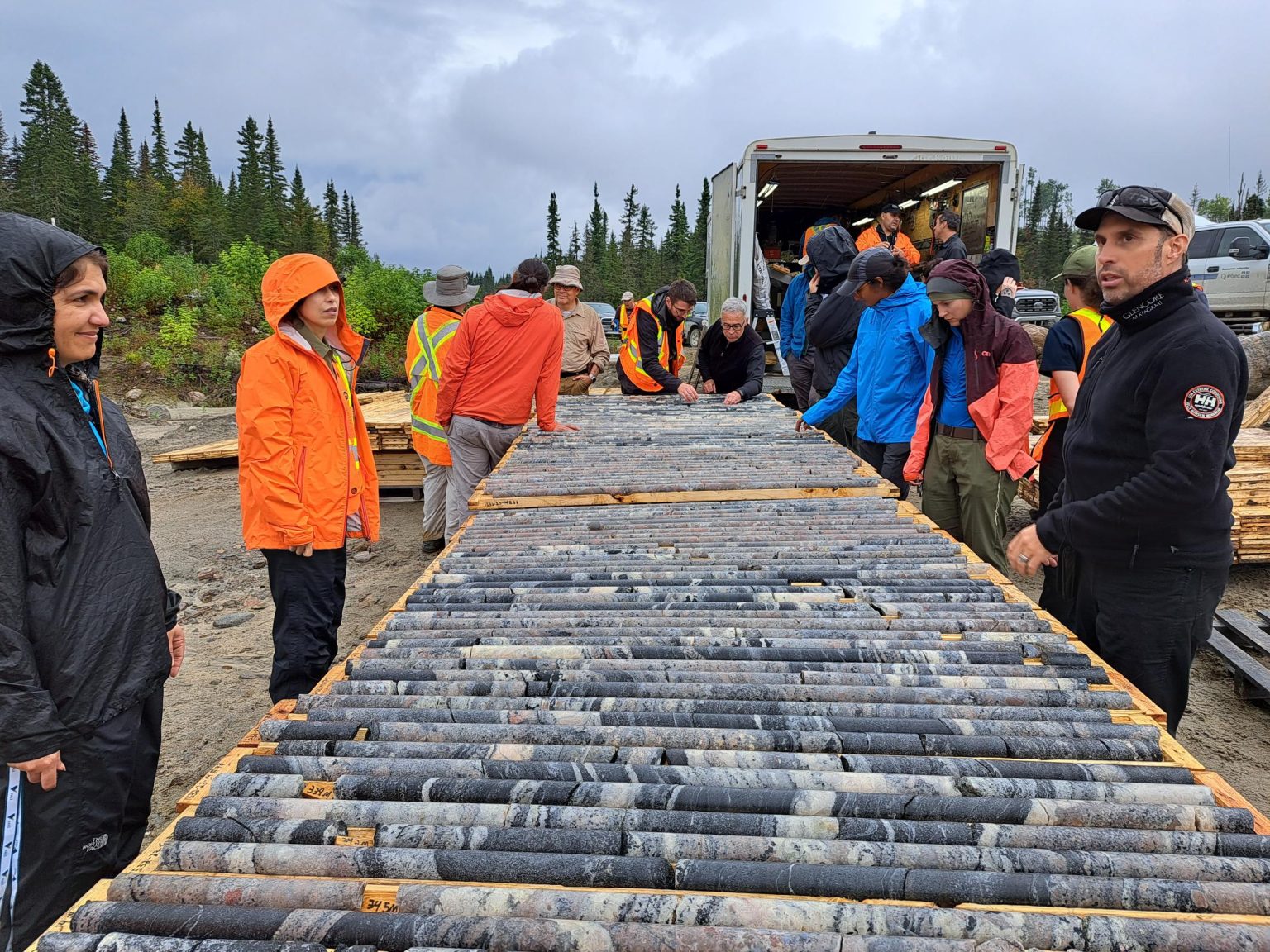Bottoms Up
“Sight Unseen” could easily be Cementation Canada’s motto because most of the work the company does is underground. In fact, for the past 14 years, the vast majority of the engineering and contracting projects the company has undertaken have taken place deep below the surface where only a handful of people see, and moreover, appreciate, what the company does for a living.
From its North American head office in North Bay, Cementation Canada goes about its business as a hard rock engineering and mining contractor specializing in the design and construction of underground mines.
It’s not a flashy company that posts huge “Cementation” signs at each and every project, because if that was the case, the company would have to add a “sign” department to go along with its other mining divisions.
The company is simply a highly reliable and respected source of solid answers to some often tricky questions. And, as every miner knows, rarely does one solution solve all problems.
Like the various projects it tackles, Cementation Canada is a diversified operation that does everything from preliminary design through engineering, to underground construction and shaft sinking, to complete mine development including total infrastructure, and even landscaping.
The latter, (landscaping) is obviously not, however, one of the company’s more profitable services; but it does fall within the company’s “best for project” philosophy, where it provides just about every service imaginable to help get the job done.
One service that Cementation Canada is especially proud of involves its work in mine shaft construction, and, in particular, large diameter hard rock raiseboring.
As mentioned earlier, Cementation Canada offers a wide variety of mining services and, in keeping with its “best for project” philosophy, raiseboring is now a major service being provided by the company.
At the AuRico, Young-Davidson Mine, for instance, which is located beside the Town of Matachewan, about 60 km west of Kirkland Lake, raiseboring was used to build a second shaft adjacent to the historic mine’s existing shaft as part of a $377 million initial capital construction estimate to build the project and move the mine back into production.
AuRico’s mine is a massive undertaking that is expected to generate average annual production of 180,000 ounces of gold over a 15-year mine life and the new shaft is one of the key structures built at the mine in recent years to help achieve this goal.
As already mentioned, the new shaft was built adjacent to an existing shaft, but even before Cementation Canada could start the new shaft, it faced the challenge of excavating more than 10m of overburden to reach bedrock.
When that was completed, a mud slab was poured and a 381 mm pilot hole was drilled to a depth of (446 m). From that point, a 5.52-m cutting head was attached and over the next 133 days, the new shaft was drilled at a rate of 3.4 m/day. This is the first of three legs to complete the shaft.
As can be seen in the adjacent photos, raiseboring is a very clean and precise operation. In fact, the hole’s verticality was maintained using a Rotary Vertical Drilling System (RVDS). The maximum acceptable deviation for the design of the shaft is 305 mm.
Access to the underground workings for reamer installation is or will be achieved by using the existing deepened MCM shaft or by a 4,200 m long ramp that will eventually reach the 1,500-m vertical depth of the mine.
In addition to the raiseboring work, Cementation Canada is also designing and managing surface components at the mine, including the foundation for the concrete headframe, the 79-m-high headframe tower, and the installation of a friction hoist.
Keith Watson, Project Manager for Cementation, at the AuRico, Young-Davidson, project, says: “The construction of the shaft by the Cementation
crew involves the raiseboring operation in three legs, followed by ground support and finally the installation of a loading pocket and shaft internals to support skips travelling on rope guides.”
Watson said that rather than wait until the entire shaft is constructed, AuRico is taking advantage of earlier infrastructure work to hoist through legs one and two while the third, final leg is under construction.
“After each leg is raisebored, ground support is installed. The surface-mounted mechanical set-up to accomplish this consists of two winches for a three-deck stage. A hoist will allow bucket travel for men and material at the Galloway stage and a second hoist for emergency access,” said Watson.
“Work at the three-deck Galloway stage consists of a bottom deck for drilling ground support holes, a middle deck for the installation of bolts and screen, and the top deck for installation of service brackets, installation of temporary services, and storage of electric feeder cable.”
More specifically, Watson explained: “Drilling for ground support utilizes two pneumatic turret drills. Number 9 gauge galvanized chain-link screen is installed from a rotating cassette mounted on a monorail running the perimeter of the stage. 2.4 meter, 20 m resin rebar on a 1.2 by 1.2-m pattern is installed with jacklegs.”
When the first leg of the shaft is ground supported, Watson said the Galloway stage will be anchored at the bottom of Leg One to act as a head cover for the raisebore piloting and reaming of the Second Leg.
Once completed, Watson said, the Second Leg will be ground supported using the same methodology as the First Leg.
“For each successive Leg, survey control is critical to ensure the raisebore machine is on the correct coordinates,” said Watson.
At the bottom of the Second Leg, a loading pocket will be excavated and installed utilizing the Galloway stage as a work platform. Also, the shaft bottom mechanical requirements for rope guides will be installed.
Access for the reamer installation for Leg One and Two is via the mine’s ramp, while access to the Third Leg will be accomplished when the MCM shaft is deepened to the approximate 1500 m elevation.
When reaming of the Third Leg is completed, the entire surface mechanical set-up for ground support will be reinstalled under the pentice of the Second Leg. After ground support, a second loading pocket will be installed along with the shaft bottom mechanical requirements. A changeover from mid-shaft loading pocket to shaft bottom will then occur. This will involve removing the pentice, installing ground support in this area and installing new hoist ropes on the friction hoist to reach the deeper elevation.
As mentioned at the outset, much of Cementation Canada’s work takes place deep beneath the surface and is often “unseen” but there’s no question about its importance to helping ensure that mines are as safe and productive as possible.





Comments